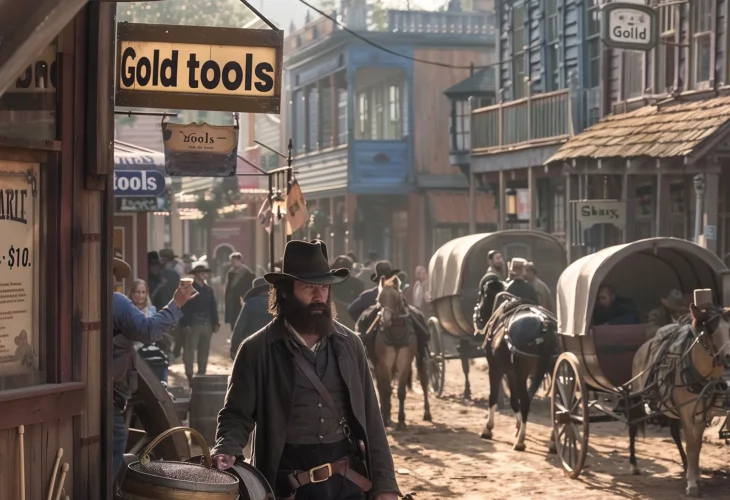History and Archaeology
How Jews Shaped California’s Gold Rush and Beyond
From merchants to mayors, Jews played a central role in shaping the Golden State

California today is the most populous state in the U.S., and Los Angeles County is the largest county in population in the entire country. Yet, California’s history as part of the United States is surprisingly short. Until 1846, it belonged to Mexico. That year, U.S. Captain John Sloat sailed into San Francisco Bay and declared California to be U.S. territory. At the time, it had only about 4,000 Mexican residents.
Just two years later, everything changed. Thin threads of gold were spotted in the rivers near San Francisco. John Marshall, the man who first found the gold, tried to keep it secret. But Samuel Brannan had other ideas. Hearing about the gold in the American River, he quickly bought every shovel and sieve he could find for just pennies. Then he ran through the streets shouting, “Gold in the river! Gold in the river!”
The rush began. In the first year alone, 90,000 people came to California, and within a few years, 300,000 prospectors and dreamers had arrived from all over the world. Before most of them found a single nugget, Brannan had already become a millionaire and selling each shovel and sieve for ten dollars.
San Francisco exploded into a booming city of tens of thousands, and Jews were among the first to arrive. They came as part of the great westward migration, and many made their mark quickly. Historian Kenneth Libo notes in his book We Lived There Too that by 1900, almost every major town west of the Mississippi had a Jewish mayor, including places like Deadwood, Dodge City, and Tombstone.
In 1848, the very first year of the Gold Rush, St. Louis opened the first synagogue west of the Mississippi: the United Hebrew Congregation, located just a kilometer from the great river. Between 1852 and 1854, four more synagogues rose in California, two in San Francisco, one in Sacramento, and one in Stockton.
Jewish leadership also shaped the state’s early days. Major Dyer of the U.S. Army led efforts to rid California of bandits. By 1848, as a Lieutenant Colonel, he had crossed mountains and plains to reach California, and in 1849 he helped organize the first High Holiday prayers at San Francisco’s Kearny Street synagogue.
Some Jewish pioneers became legendary entrepreneurs. Charles Ilfeld ran mule-drawn wagon caravans carrying goods through the Sangre de Cristo Mountains to Las Vegas, New Mexico. His business grew into one of the largest in the region. In Albuquerque, Prussian-born Henry Jaffa was elected mayor in 1885 and also served as president of the Albuquerque Hebrew Congregation.
In San Francisco, Levi Strauss, a Jewish immigrant from Germany, opened a fabric store in 1853. He first sold tents to miners, but soon created something even more valuable, durable denim jeans. His creation became an American icon and still generates billions today.
Not every Jewish figure from California’s past was known for noble deeds. Mickey Cohen, a well-known Mafia leader, was infamous for his criminal activities but still observed Shabbat and attended synagogue.
Even the name “California” may have indirect Hebrew roots. It traces back to the Spanish romance The Adventures of Esplandian, where a mythical golden island was ruled by Queen Califia. The name “Califia” came from the Muslim term “Caliphate,” which itself originates from the Hebrew word “Chalif”, meaning a substitute or successor. Early maps even showed California as an island, long before explorers confirmed it was part of the mainland.
California’s Jews were never only merchants or politicians, they were also Torah scholars, yeshiva leaders, and halachic authorities. Today, more than 1.2 million Jews live in California, making it the third-largest Jewish population in the world. Los Angeles is home to a thriving Orthodox community with many yeshivas and kollels, a living continuation of the Jewish pioneering spirit that helped shape the Golden State.

